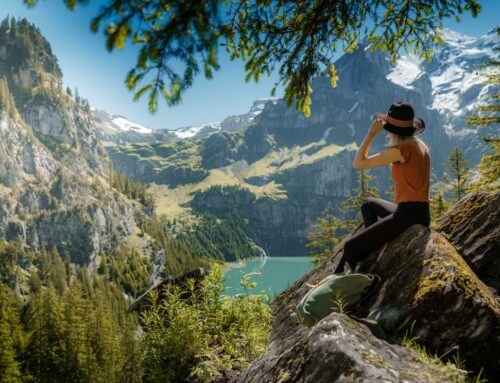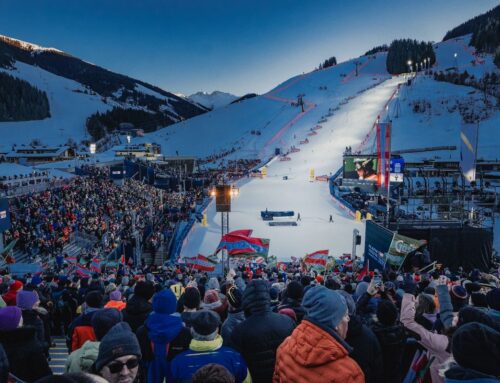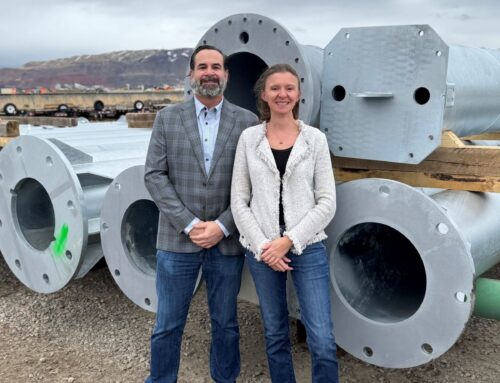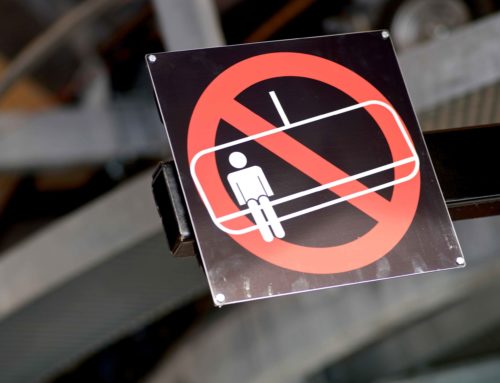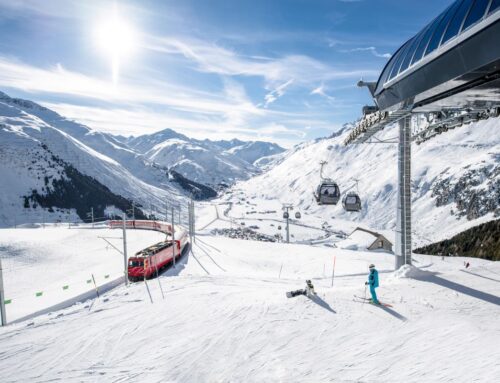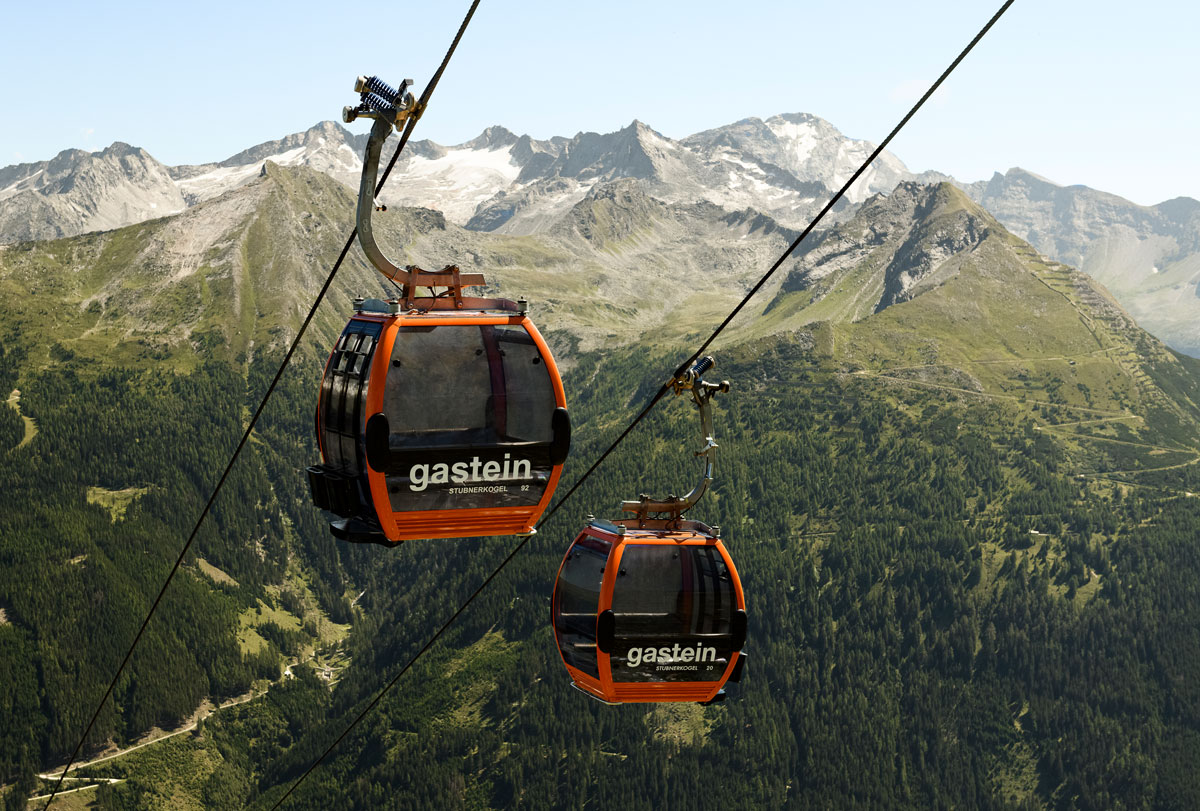
Management & Tourism, SI World 1/2023
Destination Management: Gastein mountain railways rely on data
In both summer and winter, the mountains attract the sporty and those seeking relaxation, young and old. They are all looking for the perfect mountain experience, but that looks different for each individual.
How exactly? That is what Gastein mountain railways wanted to know. To offer outstanding holiday experiences for their guests and to be ready for the future, Gastein mountain railways rely on the strategic development and appreciation of their destination.
Based on the data supplied
Bergbahnen Gastein was able to determine use of the playground up to 2.00 pm. Photo: Gasteiner Bergbahnen AG
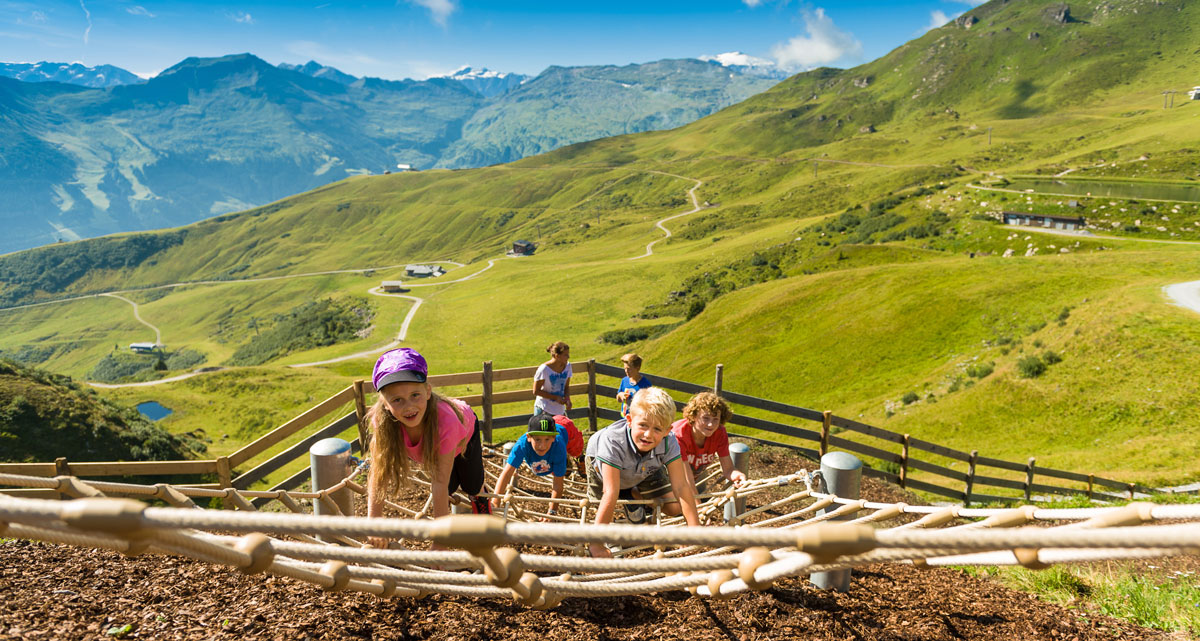
For this targeted development, the expansion of strengths and identification of new potential, as well as hospitality, figures are needed: figures about what exactly makes their mountain world outstanding and what attracts visitors – live, in order to be able to respond directly, and as statistical analyses over periods of time, in order to plan ahead.
What are the visitor magnets? Where are things quiet right now? Are there long queues? Is an extra till needed? Are the existing marketing activities having an effect? Are the desired target groups being reached? These are just a few of the questions concerning Gastein mountain railways.
“Ski tickets and turnstiles already provide rough information about visitor numbers, but they give no indication of what our guests do after they arrive on the mountain,” says Matthias Egger, Deputy Operations Manager of Schlossalmbahn.
“We wanted to compare how many people are in which location at which time,” Egger continues. To ascertain this, Gastein mountain railways approached a Swiss company that offers digitalisation solutions based on surveillance cameras in Alpine and urban areas.
Almost any camera
can be used as a guest counter. Photo: Unsplash
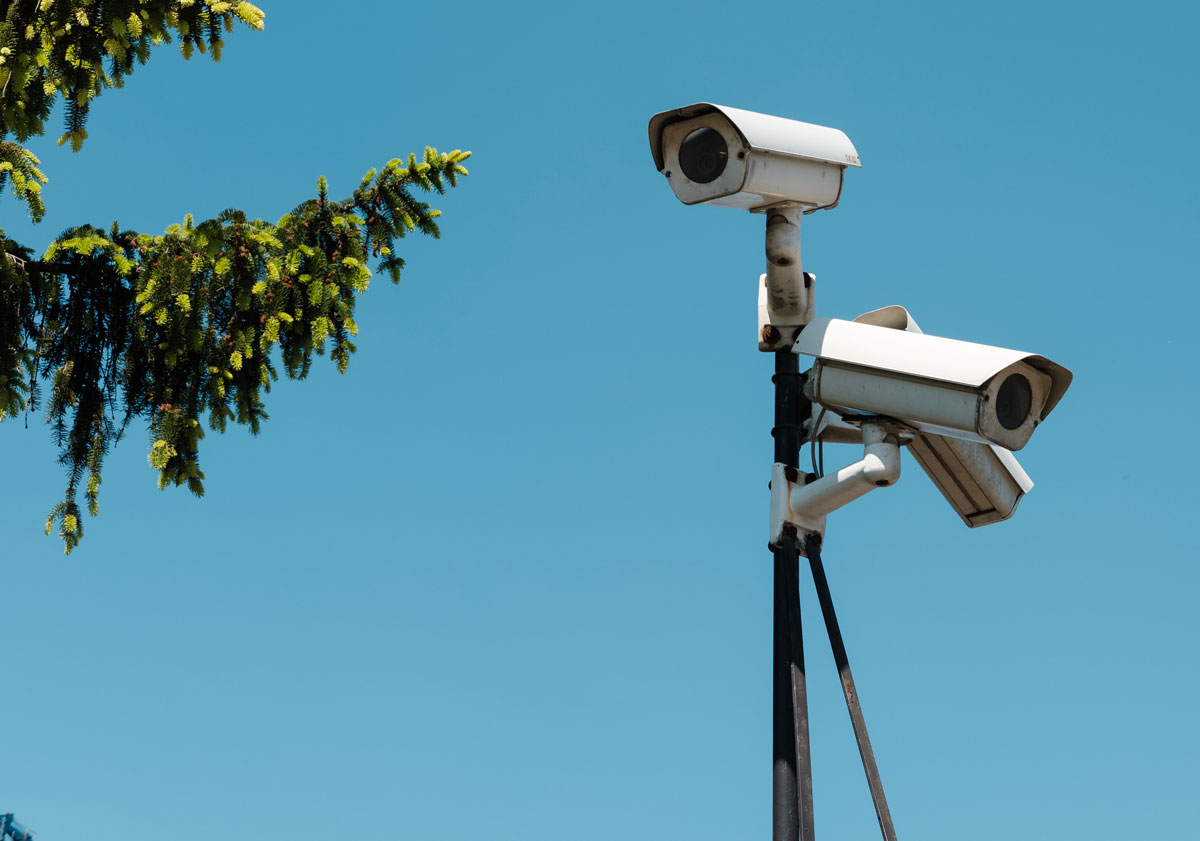
Anonymous visitor numbers around the clock
The guest counter uses cameras as sensors and uses artificial intelligence (AI) to analyse the number of visitors. This process works both automatically and anonymously. Cameras monitor hubs and key points in the ski resort and people are then counted in the footage by means of image analysis and AI. Almost any camera can be set up and used as a visitor counter.
AI collects data
With the aid of the AI solution, Gastein was able to use 12 existing cameras to analyse visitor rates at key points, e.g. in the till area, at valley stations, in the play area, on the lake or a viewing platform, or at the starting points of the most popular hiking and climbing routes. At five- minute intervals, one camera image was analysed for each location, to determine current visitor numbers.
Only still images were used. The calculated results were available in real time: both live occupancy at each location and static analyses across random periods and locations.
For the management at Gastein mountain railways, staff consent was crucial. “Although many were initially sceptical, it has proven itself successful. We were able to dispel the doubts with comprehensive and usefully prepared information,” Matthias Egger emphasises.
The programme
provides data on occupancy and the movement of visitor flows. Photo: Parquery
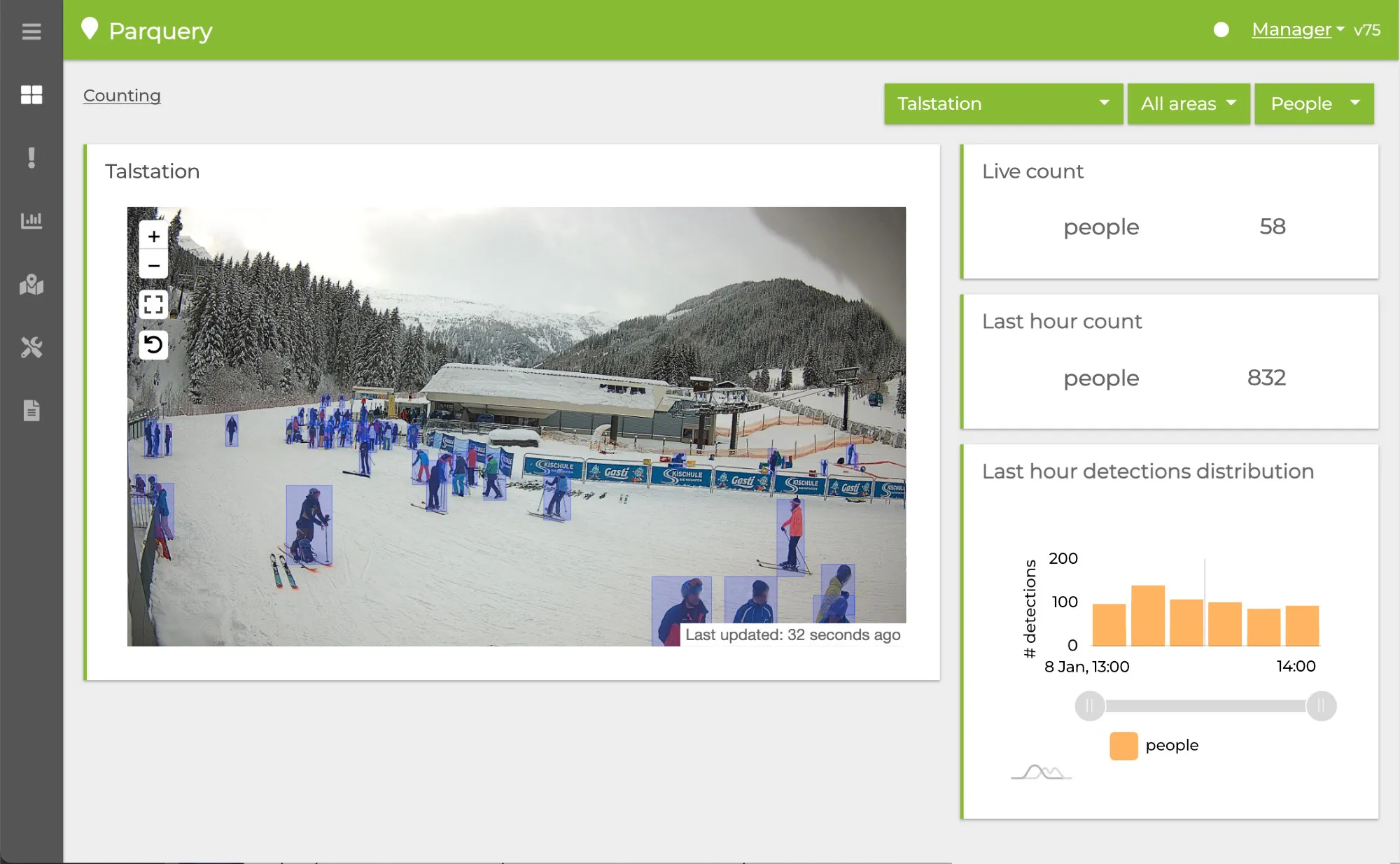
Directing visitor flows better
With the comprehensive statistics and analyses, it is possible to evaluate occupancy over time and the effects of actions. These form the basis of decision- making for the management level, for targeted development of the ski resort.
“The data provide information with which we are able to plan better how to use the mountain. The people go to either play area or reservoir, via ferrata or Almenweg – every five minutes, the number of people here is such and such a figure. From this, we can derive further actions on the mountain, for example to bring more people to the reservoir. The idea is to break up flows of people, so that nowhere becomes overcrowded,” Matthias Egger says.
Fewer queues
Furthermore, the visitor counter benefits staff and guests alike, even before buying tickets: The system can assess queues at the tills and crowds in certain areas, and it can inform staff as required. Data transmission directly to the guest and integration with other relevant visitor information are aspects that Gastein mountain railways have not yet implemented in this initial step.
Live information especially is of particular interest for guests e.g. such as queues in the till and entrance areas, the current occupancy of restaurants, pistes or valley stations, lifts etc.. On the one hand, this benefits the guests and can make their stay even better; on the other hand, it can ensure balanced occupancy of all facilities and provisions and thus help the operators to offer guests a good service.
